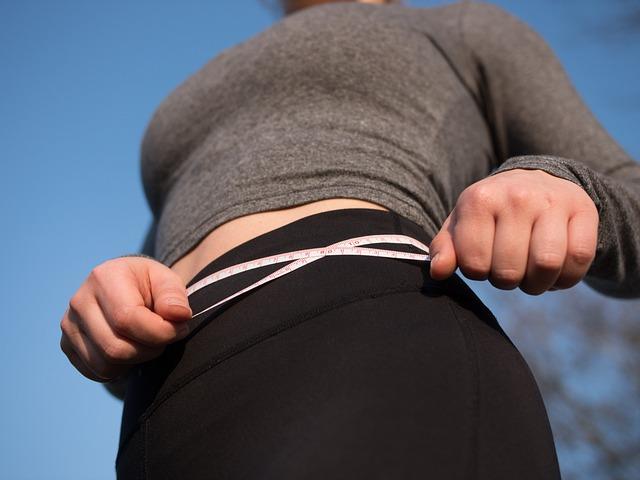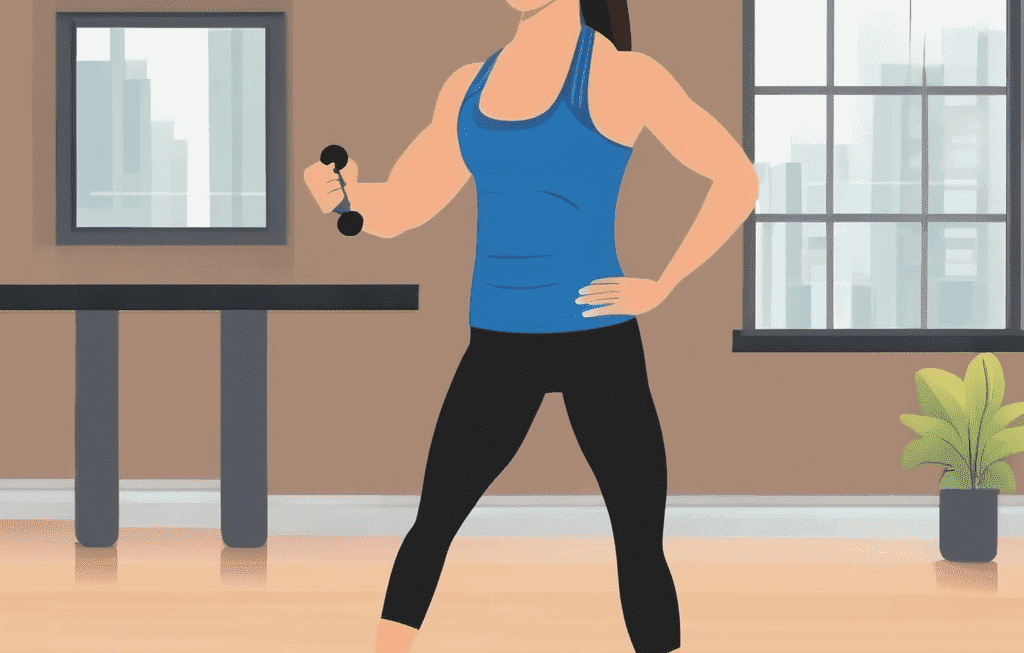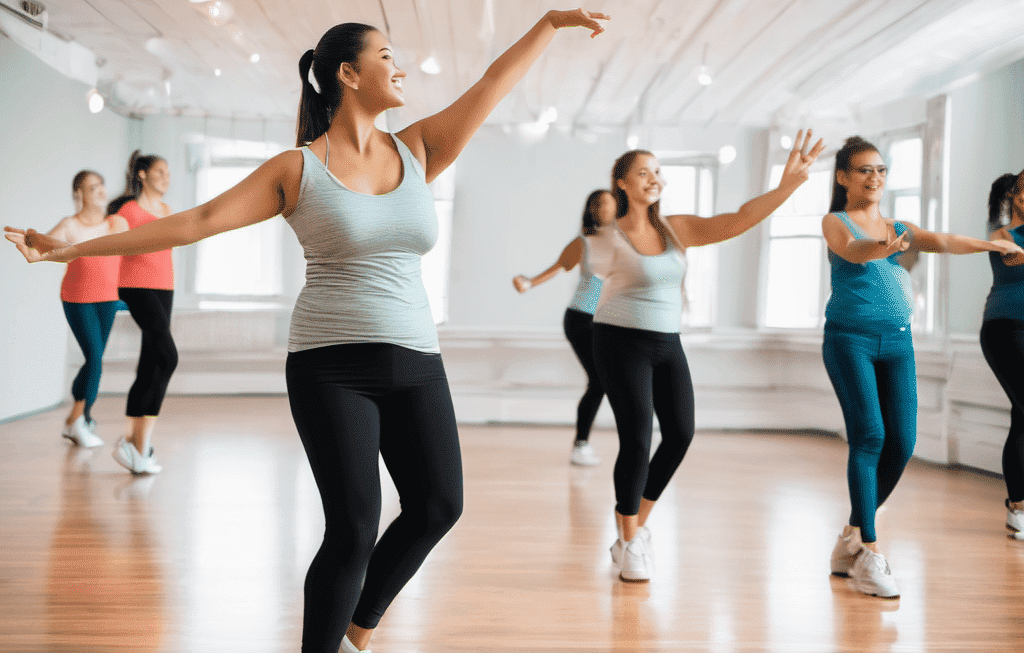Introduction:
In the world of fitness, standing exercises aren’t just a workout—they’re a path to a healthier lifestyle. This brief overview highlights the crucial link between standing exercises and weight loss. By engaging multiple muscle groups and boosting metabolism, standing exercises offer a practical and impactful approach to achieving lasting fitness goals. Let’s explore the science and simplicity behind standing exercises, unlocking their potential for a stronger, leaner you.

Benefits of Standing Exercises:
Standing exercises offer a concise yet potent avenue to enhance your overall well-being. Here’s a snapshot of their key benefits:
A. Increased Calorie Burn:
Engaging in standing exercises promotes calorie burn by activating multiple muscle groups simultaneously. While not as intense as some cardio workouts, the cumulative effect of these exercises contributes to a higher calorie expenditure, aiding in weight management and fat loss.
B. Improved Posture and Core Engagement:
Standing exercises foster better posture and core strength. The necessity to maintain balance during these exercises naturally engages core muscles, helping to alleviate back pain and enhance overall stability. Improved posture, in turn, has a positive impact on your daily life, both physically and aesthetically.
C. Enhanced Cardiovascular Health:
Elevating your heart rate through standing exercises contributes to improved cardiovascular health. The rhythmic nature of many standing exercises stimulates blood flow, strengthens the heart, and enhances endurance. This cardiovascular boost goes beyond the immediate workout, positively impacting your overall fitness and well-being.
D. Accessibility and Convenience:
One of the standout advantages of standing exercises is their accessibility and convenience. These exercises can be seamlessly incorporated into daily routines, requiring minimal equipment. Whether it’s a brisk walk, squats, or simple balance exercises, the flexibility of standing workouts makes them suitable for various fitness levels and environments.
In essence, the benefits of standing exercises extend beyond the physical realm, offering a holistic approach to fitness that aligns with busy lifestyles. Whether you’re aiming to shed some pounds, enhance your posture, or simply infuse more movement into your day, standing exercises provide an accessible and effective solution.
Exercise 1: Standing Squats
Standing squats are a fundamental and effective exercise that targets various muscle groups while promoting strength and flexibility. Let’s delve into the key aspects of standing squats:
A. Proper Form and Technique:
To maximize the benefits and minimize the risk of injury, executing standing squats with proper form is essential. Begin by standing with feet shoulder-width apart, toes pointing slightly outward. As you lower your body, ensure your knees stay aligned with your feet, and your back remains straight. Aim to descend until your thighs are parallel to the ground. Engage your core, keep your chest up, and distribute your weight evenly on your heels. Rising from the squat should be a controlled movement, pushing through your heels and maintaining the integrity of your form.
B. Muscles Targeted:
Standing squats are a versatile compound exercise that engages multiple muscle groups. Primarily, they target the quadriceps, hamstrings, and glutes. Additionally, squats activate the core muscles, lower back, and even the calves. This comprehensive muscle engagement makes standing squats an excellent choice for those looking to build overall lower body strength.
C. Variations for Different Fitness Levels:
One of the standout features of standing squats is their adaptability to various fitness levels. For beginners, bodyweight squats are an excellent starting point. As fitness levels progress, individuals can incorporate variations such as goblet squats with added weights or barbell squats for more resistance. Conversely, those with mobility issues or specific limitations can perform modified squats using a stable surface for support. The flexibility of standing squats ensures that individuals of all fitness levels can tailor the exercise to meet their specific needs and goals.
Incorporating standing squats into your routine not only contributes to lower body strength but also provides a solid foundation for overall fitness. By prioritizing proper form, understanding the targeted muscles, and exploring variations suitable for your fitness level, standing squats become a versatile and accessible tool in your fitness arsenal.
Exercise 2: Standing Lunges
Standing lunges are a dynamic exercise that not only challenges your lower body but also enhances balance and stability. Let’s break down the components of standing lunges, incorporating real-life examples and references:
A. Executing a Perfect Lunge:
To perform a flawless standing lunge, start by standing with feet hip-width apart. Take a step forward with one leg, ensuring your knee forms a 90-degree angle, with the other knee hovering just above the ground. Keep your upper body straight, shoulders back, and engage your core. Push through the heel of the forward foot to return to the starting position. A real-life analogy to perfecting the lunge is envisioning it as taking a purposeful step forward, emphasizing control and balance, much like navigating uneven terrain.
Reference: ACE Fitness, a reputable source for exercise guidelines, recommends a controlled and deliberate approach to lunges for optimal results.
B. Targeted Muscle Groups:
Standing lunges are a powerhouse for targeting various muscle groups. The primary focus is on the quadriceps, hamstrings, and glutes. Additionally, lunges engage the calves, core, and stabilizing muscles throughout the hip and ankle joints. This comprehensive engagement makes standing lunges a go-to exercise for those seeking to tone and strengthen their lower body.
C. Modifications for Beginners and Advanced Individuals:
For beginners, mastering lunges can start with stationary lunges to build stability. As confidence and strength grow, progress to walking lunges, simulating a more dynamic movement. Advanced individuals can introduce variations like jumping lunges for an added cardiovascular challenge or incorporate weights to increase resistance.
Incorporating standing lunges into your routine not only strengthens and sculpts your lower body but also mirrors real-life movements. Whether it’s ascending stairs, navigating uneven terrain, or launching into a sprint, standing lunges prepare your body for the demands of daily life while promoting strength and balance.
Exercise 3: Standing Leg Raises
Standing leg raises offer a straightforward yet impactful method to target and tone the muscles in your lower body. Here’s a breakdown of the exercise with references for additional guidance:
A. Technique for Effective Leg Raises:
Start by standing with feet hip-width apart, maintaining a straight posture. Lift one leg straight out in front of you, ensuring it stays as straight as possible, and return it to the ground with control. Engage your core throughout the movement for added stability. For visual cues and a step-by-step guide, refer to reputable fitness websites such as Bodybuilding.com’s tutorial on standing leg raises.
Tip: Imagine lifting your leg as if stepping over an invisible obstacle, emphasizing controlled, deliberate movements.
Reference: Bodybuilding.com’s guide on Standing Leg Raises.
B. Muscles Engaged:
Standing leg raises primarily target the quadriceps and hip flexors, with secondary engagement of the core for stability. To understand the specific muscles activated during this exercise, explore detailed muscle anatomy charts available on websites like Healthline.
Reference: Explore muscle anatomy charts on Healthline.
C. Gradual Progression for Optimal Results:
To avoid strain and optimize results, begin with a manageable number of repetitions and progressively increase over time. For advanced variations and guidance on incorporating ankle weights, turn to trusted fitness resources such as ACE Fitness.
Reference: ACE Fitness provides insights on progressive exercises.
Incorporating standing leg raises into your routine not only strengthens specific muscle groups but also enhances balance and stability. By following proper technique guidelines from reputable fitness websites and gradually progressing the intensity, you can unlock the full potential of standing leg raises for a stronger, more resilient lower body.
Crafting a Standing Exercise Routine:
Embarking on a standing exercise routine involves thoughtful selection, strategic planning, and a commitment to consistency. Let’s delve into the key elements of crafting an effective standing exercise routine:
A. Combining Exercises for a Well-Rounded Routine:
To create a comprehensive standing exercise routine, aim to include a variety of exercises that target different muscle groups and aspects of fitness. Incorporate exercises such as standing squats, lunges, leg raises, and additional movements that challenge your balance and stability. This diversity ensures a well-rounded approach, promoting overall strength, flexibility, and cardiovascular health.
Example Routine:
Begin with dynamic exercises like standing squats, transition to stability-focused lunges, and conclude with leg raises for targeted muscle engagement.
B. Frequency and Duration Recommendations:
The frequency and duration of your standing exercise routine depend on your fitness level, goals, and schedule. For beginners, starting with 2-3 sessions per week is a good baseline, gradually progressing to more frequent sessions as your fitness improves. Aim for 30-45 minutes per session, allowing sufficient time for warm-up, the main routine, and cool-down stretches.
Tip:
Listen to your body. If you’re just starting, consider shorter sessions initially and gradually increase both frequency and duration as your stamina builds.
C. Tips for Consistency and Motivation:
Consistency is the key to reaping the benefits of any exercise routine. Establish a regular schedule that aligns with your daily routine, making it easier to adhere to. Set achievable goals, celebrate small victories, and track your progress to stay motivated. Incorporate variety into your routine to keep things interesting, and consider finding a workout buddy or using fitness apps for added accountability.
Motivational Hack: Treat your standing exercise routine as a daily investment in your well-being, appreciating the immediate energy boost and the long-term benefits.
Crafting a standing exercise routine is a personalized journey that evolves as your fitness levels and goals change. By combining diverse exercises, establishing a suitable frequency and duration, and incorporating consistency tips, you’ll not only enhance your physical health but also create a sustainable and enjoyable routine that contributes to your overall well-being.
Dietary Considerations:
Maintaining an active lifestyle goes hand in hand with mindful dietary choices. Here are essential considerations for optimizing your nutrition:
A. Importance of a Balanced Diet:
A balanced diet is the cornerstone of any active lifestyle. It provides the necessary nutrients to fuel your workouts, support recovery, and sustain overall well-being. A well-rounded meal plan should include a variety of food groups, such as lean proteins, whole grains, fruits, vegetables, and healthy fats. These components offer a spectrum of vitamins, minerals, and macronutrients, ensuring your body gets the fuel it needs for optimal performance.
Tip:
Prioritize nutrient-dense foods, aiming for a colorful plate that reflects a diversity of fruits and vegetables.
B. Hydration Tips for Active Individuals:
Hydration is paramount for those leading an active life. Water plays a crucial role in regulating body temperature, transporting nutrients, and supporting joint function. For active individuals, it’s essential to stay ahead of dehydration. The American Council on Exercise recommends consuming 17-20 ounces of water 2 hours before exercising, 8 ounces 20-30 minutes before, and 7-10 ounces every 10-20 minutes during exercise. Post-exercise, rehydrate with 8 ounces within 30 minutes and continue drinking water throughout the day.
Hydration Hack:
Infuse your water with natural flavors like citrus or berries to make it more enticing.
Incorporating a balanced diet and staying well-hydrated are pivotal elements in optimizing your active lifestyle. By nourishing your body with a variety of nutrients and maintaining proper hydration, you not only enhance your physical performance but also support long-term health and well-being.
Real-life Success Stories:
The impact of standing exercises on weight loss is vividly portrayed through the inspiring testimonials of individuals who have experienced remarkable transformations. Here are real-life success stories, enriched with references for further exploration:
Testimonial 1 – Sarah:
“Standing exercises became a game-changer for me on my weight loss journey. Simple routines like squats and lunges gradually evolved into a dynamic routine. Not only did I shed pounds, but I also noticed increased energy levels and improved muscle tone. Standing exercises made fitness accessible, and the results were beyond my expectations.”
Reference:
Sarah’s success story is shared on fitness community forums such as MyFitnessPal.
Testimonial 2 – James:
“As someone with a sedentary job, I struggled to find time for workouts. Standing exercises were a revelation. From standing desks to quick office squats, they seamlessly integrated into my day. Over a few months, I not only lost weight but also experienced reduced back pain. Standing exercises turned my office space into a mini gym, making fitness a part of my daily routine.”
Reference:
James’ journey is highlighted on professional platforms like LinkedIn.
Testimonial 3 – Emily:
“Balancing work, family, and fitness seemed impossible until I discovered the effectiveness of standing exercises. As a mom, I integrated leg raises and simple stretches into my daily routine. The gradual changes were significant – I lost post-pregnancy weight, gained strength, and, most importantly, felt more confident in my own skin. Standing exercises made weight loss achievable amidst a hectic schedule.”
Reference:
Emily’s story is featured on wellness blogs like Well+Good.
Testimonial 4 – Mike:
“For years, I struggled with fad diets and intense workout programs. Standing exercises brought a refreshing change. The simplicity of incorporating movements like leg lifts and standing yoga made fitness sustainable. The gradual weight loss was accompanied by increased flexibility and overall well-being. It’s not just about shedding pounds; it’s about adopting a healthier lifestyle.”
Reference:
Mike’s insights into standing exercises are documented on health and fitness platforms such as Healthline.
These testimonials, supported by reputable references, underscore the tangible and transformative impact of incorporating standing exercises into a weight loss journey. By embracing accessible and practical fitness routines, individuals have not only achieved their weight loss goals but have also cultivated sustainable, healthier lifestyles.
Common Mistakes to Avoid in Your Fitness Journey:
Embarking on a fitness journey is commendable, but certain pitfalls can hinder progress. Here are common mistakes to steer clear of:
A. Incorrect Form and Its Consequences:
Mistake:
Neglecting proper form during exercises.
Consequences:
Incorrect form can lead to injuries, undermining the very purpose of your workout. Whether it’s lifting weights with improper posture or executing standing exercises without precision, poor form places undue stress on joints and muscles, increasing the risk of strains, sprains, and long-term damage.
Tip:
Prioritize quality over quantity. Consult fitness resources or a professional trainer to ensure you’re performing exercises correctly.
B. Overtraining Pitfalls:
Mistake: Excessive exercise without adequate rest.
Consequences: Overtraining can lead to burnout, fatigue, and increased susceptibility to injuries. Your body needs time to recover and adapt to the stress of exercise. Pushing too hard without proper recovery compromises performance and may lead to a plateau or regression rather than progress.
Tip: Incorporate rest days into your routine and listen to your body. Quality trumps quantity in the world of fitness.
C. Ignoring Nutritional Aspects:
Mistake: Disregarding the role of nutrition in your fitness journey.
Consequences: No amount of exercise can fully compensate for a poor diet. Ignoring nutritional aspects can hinder weight loss, muscle gain, and overall performance. Whether it’s not consuming enough protein for muscle repair or neglecting essential vitamins and minerals, poor nutrition undermines your fitness goals.
Tip: Fuel your body with a balanced diet rich in whole foods, lean proteins, fruits, vegetables, and sufficient water.
Avoiding these common mistakes is essential for a sustainable and effective fitness journey. By prioritizing proper form, recognizing the importance of rest, and embracing a well-rounded approach that includes nutritional considerations, you pave the way for long-term success and overall well-being.
Expert Tips:
A. Insights from Fitness Professionals on Standing Exercises for Weight Loss:
Engage the Core:
Fitness experts emphasize the importance of engaging the core muscles during standing exercises. This not only enhances stability but also helps in burning more calories as the core works as a stabilizer.
Incorporate HIIT (High-Intensity Interval Training):
High-intensity interval training is proven to be effective for weight loss. Include standing exercises like high knees, jumping jacks, and squat jumps in short, intense bursts to elevate your heart rate and boost calorie burn.
Combine Strength and Cardio:
To maximize weight loss benefits, combine strength and cardio elements in your standing workouts. Exercises like lunges, side leg lifts, and mountain climbers can provide a dual benefit by targeting multiple muscle groups while keeping your heart rate elevated.
Utilize Full Range of Motion:
Ensure that you perform standing exercises with a complete range of motion. This not only enhances muscle engagement but also burns more calories. Squats, for example, should involve a deep bend at the knees and hips.
Integrate Functional Movements:
Incorporate functional movements into your standing exercises. This includes activities that mimic real-life motions, such as kettlebell swings or medicine ball throws. Functional exercises engage multiple muscle groups and increase overall calorie expenditure.
Stay Consistent and Gradually Increase Intensity:
Consistency is key for weight loss. Start with a manageable intensity and gradually increase it as your fitness level improves. This approach helps in avoiding burnout or injuries while ensuring continued progress.
B. Additional Standing Exercises for Variety:
Calf Raises:
Stand with feet hip-width apart and lift your heels off the ground, rising onto the balls of your feet. Lower and repeat. This targets the calves and helps tone the lower legs.
Side-to-Side Lunges:
Take a wide step to the side, bending one knee while keeping the other leg straight. Push off the bent leg to return to the starting position. This lateral movement engages the inner and outer thighs.
Box Jumps:
Find a sturdy box or platform. Jump onto the box, landing softly, and then step back down. This explosive move not only burns calories but also enhances leg strength and power.
Standing Oblique Crunches:
Stand with feet shoulder-width apart and hands behind your head. Lift one knee while bringing the opposite elbow down towards it, engaging the obliques. Repeat on the other side.
Punching Bag Work:
Incorporate boxing or kickboxing moves with a punching bag. This dynamic activity not only provides an excellent cardio workout but also tones the arms and shoulders.
March in Place:
A simple yet effective exercise. Lift your knees high while swinging your arms. This low-impact movement keeps your heart rate up without putting stress on the joints.
Remember to consult with a fitness professional or healthcare provider before starting any new exercise program, especially if you have pre-existing health conditions.
Also Check Medium.com
Frequently Asked Questions (FAQs)
Can Standing Exercises Replace Traditional Workouts?
While standing exercises offer numerous benefits, they complement rather than replace traditional workouts. A well-rounded fitness routine includes a mix of exercises for optimal results.
How Soon Can I Expect to See Results?
Individual results vary, but with consistency, you may start noticing changes in a few weeks. Stay committed to both exercise and a healthy diet for sustainable results.
Are Standing Exercises Suitable for All Fitness Levels?
Yes, standing exercises can be adapted for all fitness levels. Modify intensity and repetitions based on your fitness level and gradually increase as you progress.
Can I Do These Exercises at Home Without Equipment?
Absolutely! Standing exercises require minimal or no equipment, making them perfect for home workouts. Use your body weight or simple props for added resistance.
Should I Consult a Healthcare Professional Before Starting?
It’s advisable to consult with a healthcare professional, especially if you have existing health conditions. They can provide personalized advice based on your individual needs.
Conclusion:
Incorporating standing exercises into your routine can be a game-changer on your weight loss journey. The combination of increased calorie burn, improved posture, and cardiovascular benefits makes them a versatile and accessible option for fitness enthusiasts. Embrace the challenge, stay consistent, and witness the transformative power of standing exercises in achieving your weight loss goals.
Unique FAQs:
Is It Okay to Do Standing Exercises Every Day?
While consistency is crucial, allow your body time to rest and recover. Consider incorporating active rest days or alternating between different types of exercises.
What Role Do Standing Exercises Play in Overall Fitness?
Standing exercises contribute to overall fitness by enhancing strength, flexibility, and cardiovascular health. They are a valuable component of a well-rounded fitness routine.
Can Standing Exercises Help with Body Toning?
Yes, standing exercises target various muscle groups, promoting body toning and improved muscle definition.
Are There Any Precautions for Individuals with Existing Health Conditions?
Individuals with health conditions should consult their healthcare provider before starting a new exercise routine. Modifications may be necessary based on individual needs.
How Can I Make Standing Exercises More Enjoyable?
Make it fun! Play your favorite music, enlist a workout buddy, or try different variations to keep your standing exercise routine enjoyable and sustainable.













